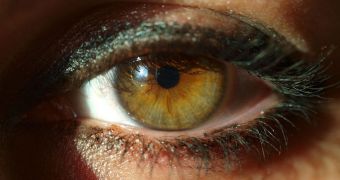A team of investigators in the United States announces the development of a new, computer-like sensor, which has a volume of just one cubic millimeter. The instrument features many of the components a regular computer has.
The device is composed of a small processor, a pressure sensor, a thin-film lithium battery, a small memory, a solar cell, and a wireless transmitter, and its main goal is to assist doctors with taking constant measurements of the pressure inside the eyes of people suffering from glaucoma.
In this condition, the pressure inside the eye varies, and increases drastically at times, and on-the-go monitoring is very important for people who have it. The new computer was developed specifically to meet this need.
Due to its small size and volume, it can easily be implanted inside the eyes of patients. Once activated, it takes readings of intra-ocular pressure once every 15 minutes, and stores the data on the memory.
It can continue to do so for at least a day, until an external device is used to download the data wirelessly onto a normal computer. Ophthalmologists can then analyze the readings, and extract longer-term trends.
In many regards, the new sensor is similar to a Holter device, an instrument doctors use to keep track of a patient's heart or brain activity over a period of 24 hours, Technology Review reports.
The entire computer is encased in a tiny glass rectangle, explain scientists with the University of Michigan, who conducted the research. They presented their achievement at the International Solid-State Circuits Conference, recently held in San Francisco.
They said that the small computer is powered by a solar cell measuring only 0.07 square millimeters, which converts light passing towards the retina into electricity. The team estimated that 1.5 hours of exposure to sunlight are enough to recharge the battery completely.
In order to maintain power consumption at very low levels – about 5.3 nanowatts – the team had to resort to using older, 180-nanometer technology for creating the components, rather than modern, 32-nanometer technology.
With the aid of the new device, healthcare experts may develop new ways of treating glaucoma for each individual patient, rather than taking a standard approach. This could help improve treatment efficiency rates overall.

 14 DAY TRIAL //
14 DAY TRIAL //